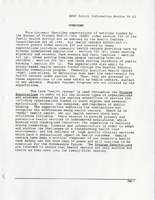Search the Special Collections and Archives Portal
Search Results
Lucille Matyas oral history interview
Identifier
Abstract
Oral history interview with Lucille Matyas conducted by Michael Bernstein on February 23, 1975 for the Ralph Roske Oral History Project on Early Las Vegas. In the interview, Matyas discusses moving from Ohio to Las Vegas, Nevada in 1935. Matyas also discusses her work with the Southern Nevada Telephone Company, the Reynolds Electrical & Engineering Co., Inc. (REECo) in association with the Nevada Test Site, her life as a housewife, and her work with the Central Telephone (Centel) Corporation.
Archival Collection
Leroy Burt, Joseph Kine, and Tommy Nelson oral history interviews
Identifier
Abstract
Oral history interviews with Leroy Burt, Joseph Kine, and Tommy Nelson conducted by Dennis McBride on November 10 and 11, 1986 for the Boulder City Library Oral History Project. The men discuss what they had been doing when the depression started in 1929, when they moved to Nevada, and their first jobs in Boulder City and the dam site. They share stories about their work experiences and discuss the different types of work at the dam, including high scalers, form strippers, jackhammer operators, and concrete pouring and puddling. They also talk about incidents and accidents that occurred during production, and the differences in safety standards in the 1930s and the 1980s.
Archival Collection
Harrie Fox Hess oral history interview
Identifier
Abstract
Oral history interview with Harrie Fox Hess conducted by Scot Siegel on February 26, 1979 for the Ralph Roske Oral History Project on Early Las Vegas. Hess discusses how he felt as a young adult moving to Las Vegas, Nevada, his contributions to Nevada through his work as a psychologist, and the first law to be drafted on psychology certification in Nevada. Hess then describes the Wildcat Lair as an important site of social recreation for early Las Vegas youth. He also discusses how workers from the Great Depression paved the way for industrial success in gambling due to their employment on the Boulder (Hoover) Dam.
Archival Collection
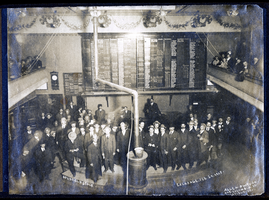
Photograph of brokers at the Goldfield Stock Exchange, Goldfield (Nev.), February 29, 1908
Date
Archival Collection
Description
Site Name: Goldfield Stock Exchange (Goldfield, Nev.)
Image
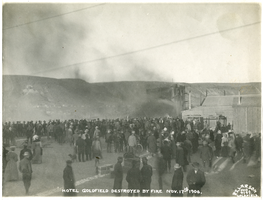
Photograph of Goldfield Hotel fire (Nev.), November 17, 1906
Date
Archival Collection
Description
Site Name: Goldfield Hotel (Goldfield, Nev.)
Image
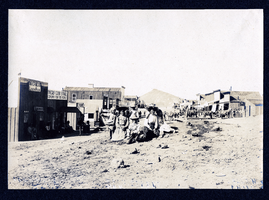
Photograph of women and children posing on Main Street, Goldfield (Nev.), early 1900s
Archival Collection
Description
Site Name: Inverness Lodging House (Goldfield, Nev.)
Miners' Cash Store (Goldfield, Nev.)
Image
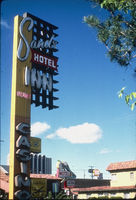
Slide of the neon sign for the Sands Inn Casino, Reno, Nevada, 1986
Date
Archival Collection
Description
Image
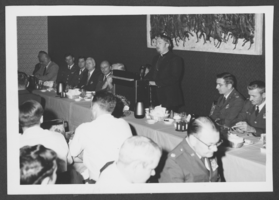
Photograph of military personnel at a prayer breakfast, Nellis Air Force Base, Nevada, circa 1970s
Date
Archival Collection
Description
Image
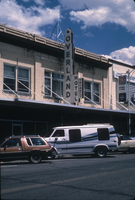
Slide of the Overland Hotel and its neon signs, Winnemucca, Nevada, 1986
Date
Archival Collection
Description
Image

